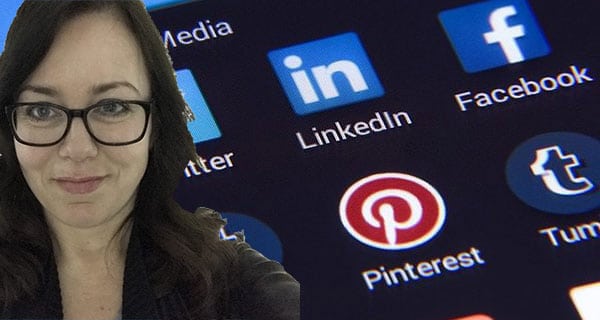Samantha Paterson is a social media manager at the University of Calgary and an instructor in Continuing Education.
Calgary’s Business: How did you get into social media as a career and what’s the appeal for you?
Paterson: During the 2000s in my ed-tech career, I was an early adopter of customer advocacy marketing, including online communities, blogs, bulletin boards and curating user-generated content.
When social media came along it wasn’t my responsibility within the organization, but it fell to me during a period of company restructuring. Basically they said, “Here you go – make something of these social channels,” with not a lot of direction.
Turned out social media marketing was an untapped skill set I was able to develop and hone at the right time for this new opportunity. I vividly recall the day I took over those channels because co-workers emailed me to tell me our social media voice instantly became warmer and less “corporate speak.” All my community-centric marketing experience came into play, I guess. I quickly got to work building content strategies and calendars. Then they gave me a team.
The appeal? Two-way engagement with an audience. You know almost immediately if content or a message is resonating.
CB: What are the best channels to use for social media?
Paterson: That’s not as easy to answer as people imagine. Social media for business doesn’t involve jumping on that ‘hot new channel’ anymore. Effective social media is resource-intensive and you need to focus your energy on where you’re most likely to get results. Where’s your audience? What are your goals?
Do some customer research and understand your organization’s social media channel demographics. Instagram may be the number one priority for some businesses but a terrible choice for others.
Depending on the target audience’s demographic, people spend part of every day on Facebook, Instagram, YouTube, Snapchat, LinkedIn and Twitter. Many visit multiple social media channels daily, too.
Survey your current customer base, run focus groups and read up on publicly-available social media audience data to better understand where to focus your energy.
CB: Why is social media so important for businesses and organizations to adopt?
Paterson: Businesses and organizations need to be where the prospect/customer/target audience spends time. As live TV viewership declines, YouTube has grown to be the second-largest search engine in the world after Google (it’s owned by Google) with nearly two billion views per month.
Combine all of that time on social platforms with the fact that prospects and customers do a lot of research searching online and an organization will begin to understand that digital marketing is a mainstream component of marketing now. Online ads and paid social media are necessary considerations in a comprehensive marketing budget.
But don’t move all resources and budget over to social media because social marketing works best as part of an integrated strategy. It’s not voodoo or magic – social media takes persistence. Tactics that take off are usually the result of learning from several failed attempts beforehand.
CB: So a company or organization has decided it has to do social media. What advice would you give them on the steps they need to take to get going?
Paterson: As we’ve entered a more mature stage of social media marketing, don’t just automatically assume the youngest employee is the best person to handle social media. He or she may live on social media, but do they know how to apply it to your business? Consider hiring someone for this skill set when recruiting a marketing/communications role, or contract hours from an expert to advise you on where to begin.
Audiences have zero tolerance for social media missteps – business leaders need to put the voice of the organization in the hands of someone who knows it inside and out. Or has the support and processes in place to get that deeper knowledge and background to be highly responsive.
Most importantly: set goals, research which social platforms are best suited for your target audiences and look at how you’re going to resource content creation.
CB: What significant trends are you seeing in social media these days?
Paterson: There are so many trends I’m keeping an eye on, but I’ll mention a few that most impact my current approach to social media marketing. Prioritizing engagement instead of being obsessed with follower counts, creating meaningful video content, and focusing on in-platform content (i.e. not depending on social media just to deliver website traffic). Of course AR/VR, messenger bots and 360 are things I’m keeping an eye on, but I haven’t built a business case for those things yet.
– Mario Toneguzzi
The views, opinions and positions expressed by columnists and contributors are the author’s alone. They do not inherently or expressly reflect the views, opinions and/or positions of our publication.




